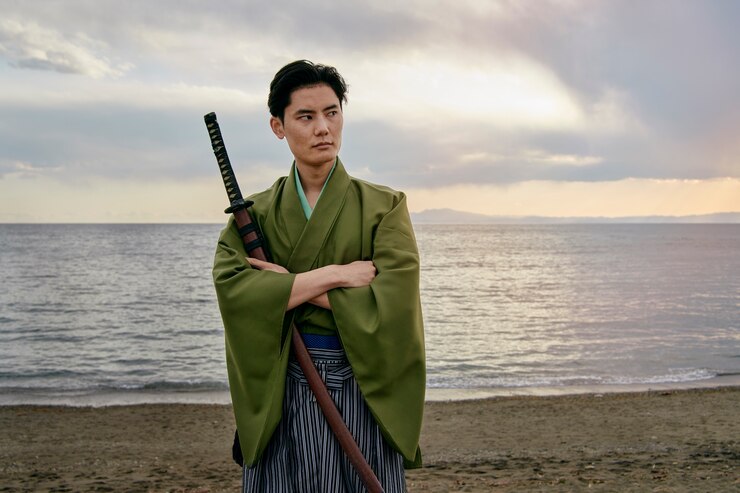The samurai sword, or katana, has captured imaginations for centuries. Its sleek design, razor-sharp blade, and deep cultural significance make it more than just a weapon; it’s a symbol of honor, precision, and craftsmanship. Whether you’re a martial arts enthusiast, history buff, or simply intrigued by the art of the sword, the story of the samurai sword is as captivating as the legends of the warriors who wielded them.
The History of the Samurai Sword
The history of the samurai sword traces back over a thousand years, evolving alongside the warriors who wielded them—the samurai. Known for their strict code of honor (bushido), these elite warriors served feudal lords in ancient Japan. The sword was more than a mere weapon; it became a representation of the samurai’s soul, serving as both a tool for combat and a symbol of their social status and moral integrity.
Origins of the Katana
The katana, the curved blade most commonly associated with the samurai, wasn’t always the primary weapon of choice. Early samurai swords, called chokuto, were straight-edged and inspired by Chinese design. However, as mounted combat became more prevalent, the need for a more efficient weapon led to the development of the curved blade around the 8th century. The curve made it easier for samurai to draw and cut in one smooth motion, ideal for fast-paced combat on horseback.
The Craftsmanship Behind the Samurai Sword
One of the most remarkable aspects of the samurai sword is the intricate process involved in its creation. Swordsmiths would spend months—sometimes even years—crafting a single blade, utilizing techniques passed down through generations. The art of sword-making was as much a spiritual practice as it was a technical one.
Materials and Forging Process
The process begins with the selection of the right materials. The core of the katana is forged from soft, flexible steel to absorb shock, while the outer edge is crafted from hard steel to maintain a sharp edge. This combination, known as differential hardening, is what gives the samurai sword its legendary sharpness and resilience.
Swordsmiths would then fold the steel repeatedly, sometimes up to 15 times, to remove impurities and create thousands of layers within the blade. This folding technique is one of the most iconic features of Japanese sword-making and contributes to the blade’s durability and cutting power.
Tempering and Sharpening
After forging, the blade undergoes a tempering process that involves heating and cooling it in water or oil. The technique creates the distinctive wavy pattern (hamon) along the blade, which is both a functional aspect and an aesthetic feature. The final step in the process is sharpening the blade, which is an art form in itself. Expert polishers use fine stones to grind the edge, achieving a razor-sharp finish.
Symbolism of the Samurai Sword
For the samurai, the sword was more than a tool of war—it was an extension of their very being. This deeply rooted symbolism turned the katana into an object of reverence. Samurai swords were passed down from generation to generation and were believed to contain the spirit of the warrior.
The Sword and Bushido
Central to the samurai’s code of conduct, or bushido, was the concept of loyalty, honor, and duty. The sword embodied these ideals. To the samurai, the katana was a sacred object, representing not only their ability to fight but also their commitment to living a life of discipline and honor. In battle, losing one’s sword was considered a deep disgrace, and many samurai would rather die than suffer such dishonor.
The Aesthetic Appeal of the Katana
Beyond its deadly functionality, the katana is also celebrated for its beauty. The sleek curvature of the blade, combined with the craftsmanship of the sword guard (tsuba), hilt wrapping (tsuka ito), and scabbard (saya), make it a work of art. Many katana are adorned with intricate designs, with engravings on the blade and ornaments on the hilt, making each sword unique.
Cultural Significance in Modern Times
Though the age of the samurai has passed, the sword continues to hold a special place in Japanese culture. Today, the katana is often displayed as a symbol of tradition, history, and artistry. Collectors around the world seek authentic samurai swords, and martial artists still train in the use of the katana as part of disciplines like Kendo and Iaido.
The resurgence of interest in Japanese sword-making has even led to a revival of traditional techniques, with modern swordsmiths continuing the centuries-old practices. The craftsmanship of a true katana is unparalleled, with modern versions still being crafted using time-honored methods.
The Katana in Popular Culture
The samurai sword has also become a fixture in global popular culture. From blockbuster movies to anime and video games, the katana is often depicted as the weapon of choice for heroic warriors. Films like Kill Bill and video games like Ghost of Tsushima have helped to perpetuate the mystique of the katana, introducing it to new generations of fans.
Why Does the Katana Continue to Captivate Audiences?
The katana’s allure comes from a combination of factors—its lethal precision, the artistry involved in its creation, and the stories of honor and valor tied to it. In many ways, the katana has become a symbol of Japan itself: a blend of tradition, skill, and beauty. Whether displayed in a museum, used in martial arts, or featured on the silver screen, the samurai sword continues to captivate and inspire.
The Legacy of the Samurai Sword
The legacy of the samurai sword is undeniable. It represents a convergence of function and form, a weapon that is both deadly and beautiful. As a symbol of the warrior’s soul, the katana transcends its role as a tool of combat and becomes a testament to the values and traditions of the samurai culture.
For those who study the history of the samurai or engage in martial arts, the katana is much more than a sword—it’s a connection to a rich past. The skill, discipline, and spirit embodied by the samurai sword live on, continuing to inspire both warriors and artists around the world.
Conclusion
The samurai sword is one of the most iconic weapons in history, revered for its craftsmanship, power, and cultural significance. Whether you’re fascinated by its history, intrigued by the craftsmanship, or drawn to its symbolic value, the katana remains a timeless artifact of Japan’s storied past. Its enduring legacy reminds us of a time when honor, precision, and artistry shaped the lives of warriors, leaving a lasting imprint on the world.






